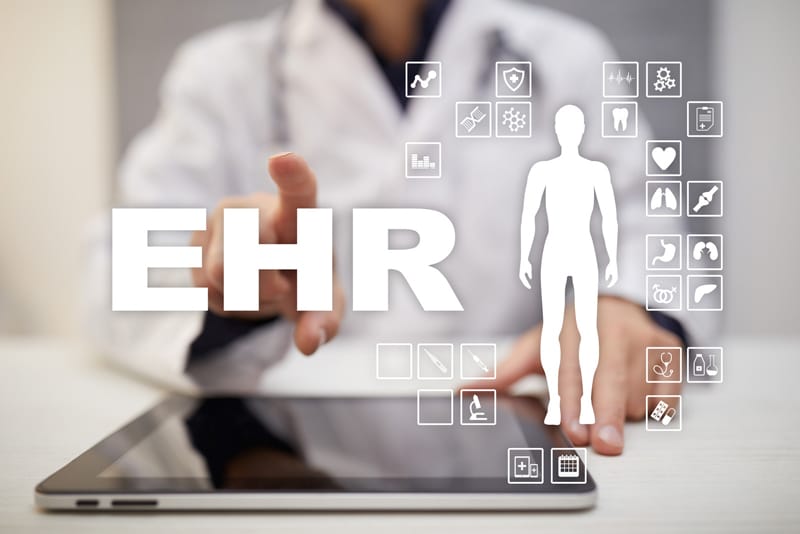
Speech recognition technology (SRT) has been widely adopted in healthcare institutions across the country. It saves time in completing EHR documentation, a task that is shown to cause physician stress and burnout. However, medical transcription services or the “human touch” continue to be relevant to ensure the accuracy of medical documentation created by SRT technology. Unedited speech recognition-generated documents were found to have clinically significant errors by a study published in JAMA Network Open in 2018.
The journal article notes that SRT supports the clinical documentation process in two ways:
- In back-end SR, the physician’s dictations are recorded and converted to text by SR software. The SR-generated text is then sent to a professional medical transcription service for editing, following which it is returned to the physician for review.
- In front-end SR, the physician dictates directly into EHR free-text fields, edits the transcribed document and saves it.
The study found a higher error rate in notes created with SR. According to the researchers, while back-end SR systems are widely used in medical settings in the U.S., the quality and accuracy of clinical documents generated through back-end SR has not been properly investigated.
Looking into physicians’ dictation errors, a 2014 Berkeley University study highlighted the importance of quality assurance processes for medical records (www.fortherecordmagazine.com). The researchers examined errors in physician dictation of medical records created using only SRT and found an average of 315,000 mistakes in every 1 million dictations. This is a much higher rate than those made by experienced medical transcriptionists (MTs).
The study was conducted in collaboration with medical transcription service organizations and professional organizations. The key findings were as follows:
- When working with speech editing/recognition, physicians’ dictation errors resulted in 153 critical errors and 403 major errors in inpatient records, while errors with transcription were just 20 and 82 respectively.
- Incorrect patient and drug names, and wrong dosages were the most common critical errors in dictation.
- The most common major errors in dictation were made-up words or acronyms, and gender and age mismatches.
The study noted that errors in physician dictation led to inaccurate medical records which may or may not affect care, but could certainly impact coding and billing.
The researchers concluded that disregarding the quality assurance role of medical transcriptionists and clinical documentation specialists can have important repercussions on documentation quality. QA checks by qualified medical transcriptionists are critical to prevent errors in medical records caused by physician dictation and SRT.
“The human review of these reports provides a vital quality assurance function, and when that human is a health care documentation specialist, especially one who is certified, organizations know that deep medical and language knowledge is being used to review and edit the records to accurately reflect the clinician’s intention.,” said Susan Dooley, MHA, CMT, AHDI-F, then president of the Association for Healthcare Documentation Integrity (AHDI) National Leadership Board (fortherecordmagazine.com).
The evidence in support of the human touch continues to mount. A recent article published in www.business2community.com cited a study which compared accuracy levels of human transcriptionists with ASR software and found that human transcriptionists had an error rate of about 4% versus 12% for ASR transcription software. The article lists several reasons why human transcriptionists are still relevant in this age of artificial intelligence (AI):
- Professional transcriptionists can understand accents and dialects, while machines are usually unable to capture these things.
- Professional transcriptionists have an in-depth knowledge of industry-specific jargon which is critical for creating accurate documentation. On the other hand, automated transcription software may not be able to comprehend technical terms, complex medical jargon, or homophones.
- Verbatim or word-for-word transcription created by SRT can be confusing. Human transcriptionists can provide intelligent, edited transcripts with correct punctuation.
- If the audio or video recording lacks clarity, experienced transcriptionists will check for facts to produce reliable documentation. Automatic transcription software cannot perform such checks.
SRT does offer advantages for physicians. First, it is easy to implement. Next, as the American Medical Association explains, it helps tell patient stories. Today’s systems come with technological capabilities to collect and organize data elements out of free text, allowing physicians to effectively create records for complex patients without having to type out everything. With SRT, physicians can also document all their thought processes by thinking out loud. It also improves the patient experience as the patient hears every word that the physician says at the encounter when documenting the history and assessment.
However, as the AMA and other industry experts point out, SRT generated medical documentation needs to be checked for errors. Clinical documentation errors can have a ripple effect and spread quickly, making them difficult to correct. This is where QA processes by medical transcription companies play a critical role. By blending speech recognition technology with quality assurance processes by human transcriptionists, clinicians can enjoy the best of both worlds.


